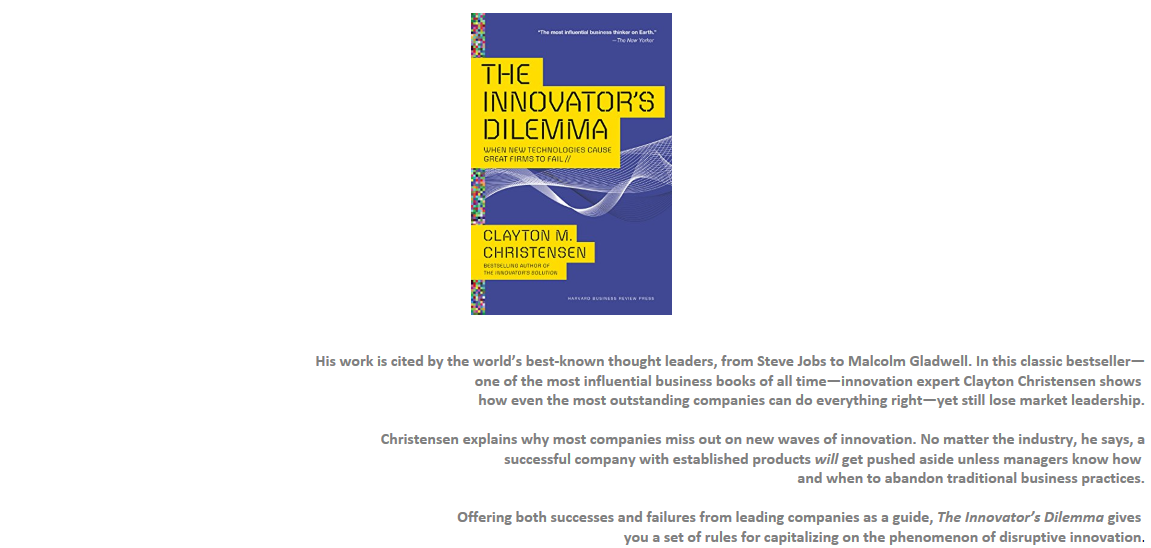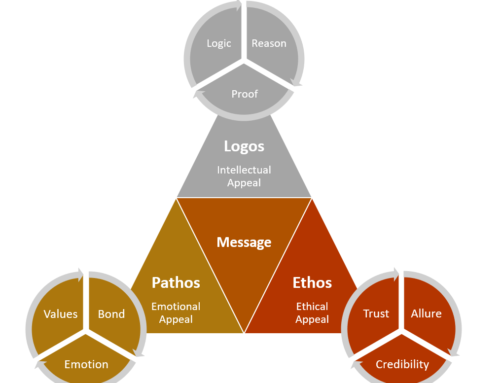
At one point in time, Sears was the most advanced company in retail. They pioneered supply chain management, store brands, catalog sales, & credit card payment payments (even before Visa/Mastercard). Then they missed discount retailing, home centers, and the internet. Now they are barely existent. Mostly due to arrogance.
The Innovator’s Dilemma = often times the completely competent decisions by a company’s executives will lead to their demise.
Sustaining vs Disruptive Technologies:
- Most new technologies foster improved product performance = sustaining technologies. They improve the performance of existing products. Most advances are sustaining technologies.
- Disruptive Technologies often lead to worse performance……. at least in the near term. Bring to the market a different market proposition: typically cheaper, smaller, simpler, and generally more convenient to use.
- Personal computer vs mainframes. Internet connected devices. Transistor vs vacuum tube
- If there are multiple competing products in a segment – and both exceed the needs of the customer – the customer will have trouble differentiating and deciding.
- Often times the rate of improvement on sustaining technologies out paces the needs of the consumer. If it wasn’t for disruptive technologies like the internet and advanced gaming, personal computer performance would have blown WAY past anyone’s needs.
- Disruptive Technologies vs Rational Investments =
- Disruptive technologies are often simpler and cheaper, and generally offer lower margins. Not greater profits
- Disruptive technologies generally come from smaller emerging markets which are currently insignificant. Generally initially embraced by the least profitable players in a market.
- Leading firms’ customers often don’t want – or initially can’t use – disruptive technologies.
Market leaders with fat margins generally have problems justifying investment in disruptive technologies – until it’s too late.
Generally, the best way for large engrained firms to embrace disruptive technologies is by setting up a separate autonomous organization. It’s tough for an organization that is built to be profitable in high end markets, to also be dominant in low end ones as well.
Also, small markets don’t solve the growth needs of large companies. So the investment just looks like cash outflows. Especially allocating talented engineers to these new, emerging markets.
Markets that don’t exist can’t be analyzed.
The product lifecycle is: Functionality > Reliability > Convenience > Ultimately to Price
Only companies who are paying CLOSE attention to the customer will see the points at which their needs and wants will evolve.


